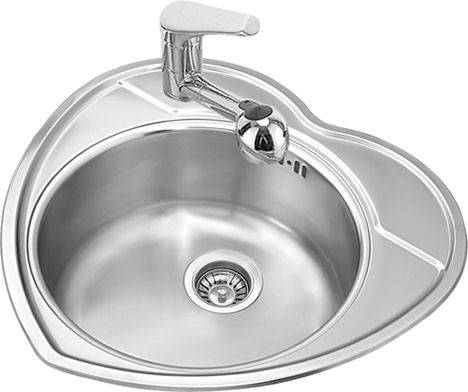Buying Guide: Kitchen Sinks
-
Kitchen sinks consist of one or multiple bowls with a faucet, drain with a strainer and convenient accessories like sprayers and soap dispensers. Besides serving as a heavily used fixture for washing hands, preparing meals and cleaning up afterwards, kitchen sinks are a prominent focal point in your kitchen.There's more to choosing a kitchen sink than just looks. Stainless steel is so called because it is steel combined with nickel and chromium designed to be imperious to rust and other problems. Stainless-steel sinks are easy to clean and don't get chipped like porcelain sinks do.
\r\n
\r\n\r\n
\r\n
\r\nFactors to Consider
\r\n
\r\nConsider these important factors when selecting your sink:- \r\n
- Material – Stainless steel, cast iron, composite granite, solid surface, cast acrylic, fireclay and copper. \r\n
- Configuration – Shape, size, number of bowls, bowl orientation and number of holes (tappings). \r\n
- Mounting – Drop-In, Under mount, Solid Surface and Tile-In. \r\n
\r\n
\r\nSize
\r\n
\r\nThe interior width of the sink’s cabinet determines the maximum dimensions for your sink. Most base cabinets are 36”–42” high and 25-1/4”-26” wide. A typical 33” by 22” sink will fill a 36” base cabinet.- \r\n
- If you use your sink primarily for washing hands, light rinsing and garbage disposal, you may need a large sink. If you cook frequently and use the sink for cleaning vegetables or washing dishes by hand, you may need a wider sink deep enough to accommodate odd sized pots and pans. \r\n
- If you are replacing a sink, select a sink that fits the existing sink cutout. If the cabinet allows, you may be able to install a larger sink by expanding the cutout. \r\n
- If you are creating a new kitchen, the only limitations are the location and size of the cabinet in which the sink will be installed. \r\n
\r\n\r\n\r\nMaterial
\r\n
\r\n- \r\n
- \r\n \r\n\r\n\r\n\r\n
Whereas sinks used to be primarily iron or stainless steel, sinks are now made from many different types of materials. Stainless steel sinks can range in price, and vary in thickness and quality. Stainless steel is durable. With respect to stainless steel sinks with mirrored finishes, keep in mind these look beautiful when clean, but are extremely difficult to keep clean. Enameled cast-iron sinks come in various colors, and are durable and easy to maintain. Sinks made from composite material are attractive because they can match your countertop, but they can be difficult to maintain. Metals such as copper or nickel are beautiful and easy to maintain, but very expensive.
\r\n \r\n
\r\nAppearance
\r\n
\r\n\r\n\r\n\r\n\r\n- \r\n
- Determine how you want your sink mounted. Traditionally, sinks were installed to sit on top of the countertop, with a small lip overlapping onto the countertop. Sinks that are mounted flush with the top of the counters or even mounted underneath are attractive and becoming more and more common. \r\n
- Kitchen sinks come in various configurations. Most sinks have two basins of equal size, one of which contains the garbage disposal. A single deep basin is convenient if you often handle large items such as pots, but can be troublesome when you want to use the garbage disposal at the same time. Some kitchen sinks offer one large basin and a small basin containing the garbage disposal. There are even some kitchen sinks that have a space between the two basins, which is convenient for drying items. \r\n
Related Articles
